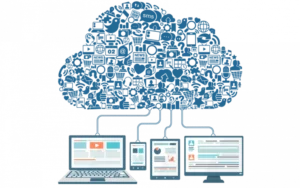Imagine someone hijacks your computer and refuses to give you access to your files until you pay a large sum of money. This is a ransomware attack – and it’s a very real threat to both businesses and individuals. It’s also one of the most common cyber security threats today.
While the above scenario may sound like something from a Bourne movie, it can and does happen to real people all around the world.
Who can forget the infamous Ashley Madison attack of 2015?
Someone hacked the Ashley Madison website – an online dating network for adults seeking to engage in extramarital affairs – and exposed the identities of millions of people, resulting in one of the biggest ransomware attacks of our time.
There was much speculation that Ashley Madison was targeted due to the nature of the site, however cyber security experts told CIO.com that money is still “the number 1 motivation for hackers today”, adding that “greed rules all”.
In other words, even if you have no extramarital affairs to hide, you are still a potential target. Anyone with money to lose and a desire to protect their personal information fits the description of a potential ransomware victim.
The official definition of ransomware (from the PC Mag Encyclopedia) is as follows: “Virus software that blackmails users by encrypting their hard drives or locking them out of the computer. It then demands payment to restore it.”
Otherwise known as ‘cryptovirus’ or ‘cryptotrojan’, ransomware has multiple names but they all water down to the same thing: blackmail.
Ransomware hackers prey on people’s fears.
The first step to protecting yourself against ransomware attacks is to understand what they are and why they happen, so you can immediately recognise the warning signs instead of succumbing to fear-mongering tactics.
According to WatchGuard’s Corey Nachreiner, ransomware attacks are on the rise for one simple reason.
“The reason is simple: consumers and businesses are more dependent than ever on data that exists only on their computers,” Corey writes (for Computer Business Review).
“Whether that data takes the form of family photos, music or tax returns, or an organisation’s critical business files or programs, people are willing to pay to get their information back, making ransomware a lucrative business model.”
4 Strategies for Protecting Your Business Against Ransomware Attacks
1. Education
Educate your employees about web browsing best practice so they don’t click on potentially harmful links and unknowingly download viruses.
2. Updates
Make sure your computer and all of your software is regularly updated. Old or outdated programs could provide an ‘open window’ for hackers.
3. Data back-up
Keep multiple copies of your important data. That way, in the event a hacker does get hold of your documents, you don’t risk losing your information altogether.
4. Advanced protection
Viruses are becoming more sophisticated by the day, so the best thing to do is invest in advanced malware protection. WatchGuard has several effective ransomware products, such as the APT Blocker, spamBlocker, and Application Control.
While no malware product can ever offer a 100% protection-guarantee, it’s a good place to start. The best course of action is to take a multi-pronged approach.
Combine malware protection with awareness, education, and cyber security best practice, and keep your IT team informed about any potential threats that come to your attention. That way, you can react (and recover) quickly if you are a ransomware victim.
Keen to understand more about Online Security Protection for New Zealand businesses? Download our latest eBook – it’s FREE!


